Zeiss APO Sonnar 135mm f/2 (ZF.2) Review
Vignetting:
Vignetting in particular is most notable on Zeiss APO Sonnar 135/2 wide open. Normally I would trust Zeiss data and wouldn’t bother to repeat tests, but in order to compare it with other two lenses, I simply had to make equal conditions.
Following graphs show relative fall off toward edges for all three lenses as we measured it here.
Zeiss shows most pronounced vignetting wide open, while Nikkor and Samyang are almost equal in that respect. I have to say that I noticed vignetting on Zeiss in a real life (shooting mostly wide open) and while it is certainly not a big problem, it could be less pronounced. Stopping lens to f/2.8 already get rid most of it, while at f/4 and smaller, vignetting is virtually non-existent.
While Samyang performed very well in terms of vignetting, it was consistently “darkest” lens of the three. I found Nikkor to be the brightest lens with a T-number of around 2.1, Zeiss is lagging behind with T-number around 2.2, but Samyang is significantly slower at T-stop approaching 2.4. (Samyang claims T number to be 2.2)
If you are not familiar with f stops and T numbers, let me put it this way – if Nikkor let you shot at f/2 and 1/250s, Zeiss will need to slow down to 1/200s, While Samyang will need to go to 1/160s approx. assuming same aperture and ISO settings (for approx. same exposure values).
This is bigger issue than vignetting IMHO, but still not a deal breaker.
Field Of View:
On paper, all three lenses should have similar FOV (Nikkor 18°, Zeiss 18.7°and Samyang 18.8°). But on paper, we should trust our government too.
Thing is that either something with my Samyang lens is very wrong, or it lost some of its angle tightness. While testing all three lenses I simply realized that Samyang is quite a bit wider than Nikkor, and Nikkor is somewhat wider than Zeiss.
Samyang and Zeiss are proud of their minimum focusing distance of just 0.8m, Nikkor is ashamed with 30cm longer one. (Rare case, where shorter is better). But when the field of view is wider, closer MFD isn’t always benefit for possible tighter framing.
Thinking how to best show you framing differences I decided to use real head model, because at the end, those are mainly portrait lenses.
Unfortunately it was 3 a.m. when I started to work on it and all my models were happily sleeping. I could use some of my lovely dolls, but none of them has size of the head of an adult (well I have one doll with such a large head, but I am afraid that it is faulty and will blow the air…) so I needed to find different solution.
Finally, I decided to make selfie. Who can better show you framing differences, than Verybiglobo in person, right?
So here I am in a T-shirt that we all use in our family when we support our son Max on his tennis matches. (I mean we all have our own T-shirts, not that we share this particular one).
I was a bit tired, so please take my apologize for a little grumpy face expression.
This is framing that I got with Zeiss from approx. 2m distance. Because Nikon can go closest to 1.1m in order to focus properly, I moved the camera to around 1.2m and compared all three lenses.
Ups! As you can see, obviously 18° is not always 18°, similar as 20cm is not always 20cm.
I don’t want to blame Samyang though, what if Zeiss and Nikkor are simply longer?
In any case, while for portrait it is not a big deal to have super tight close-up, if you consider to use one of those lenses for smaller subjects, such as flower e.g., Zeiss will certainly let you get closer.
Mr. Hubert Nasse was kind to respond on this subject too and here is his statement:
The field size of the Samyang at close distance is larger, because in this design the focal length decreases a lot with focusing to shorter distance.
Color Rendition:
During testing I noticed another specific of Samyang lens. Its color rendering is considerably warmer than Zeiss, but Zeiss is still warmer than Nikkor.
In all respect to Zeiss famous colors and 3D Pop, I found old Nikon to deliver closest to reality and most pleasing colors to my eye.
Here is a comparison between the three with a small color chart. My Minolta color meter showed 4811 K for the following scene:
When set to 4811K in LR 5.7 following results are obtained…
Zeiss APO Sonnar 135/2
Samyang 135/2
Nikkor 135/2 DC
When WB picker was used on gray square on the chart (third from right), following results were obtained:
Zeiss went to 4650K
Samyang jumped to 4400K
And Nikkor was almost there at 4750 K
Strong Samyang shift toward yellow tones was very apparent in the field testing too as you would be able to see later.
CA control:
Last test which I would like to show you here is related to CA. Here are 100% crops from small target which serves well the purpose…
In order to show differences between CA correction I boosted saturation in those shots. This is however black and white target only, so all colors that we can see here, are related to CA.
It is clear that Nikkor suffers most from CA, especially wide open. Stopped down to f/4, CA shouldn’t be a field relevant problem any more (with normal saturation setting) except in some most critical situations. While lack of CA should be main selling point of the Zeiss APO design, in reality (and I noticed that in a real life shooting too), lens rendering is not entirely CA free. It shouldn’t be a problem in 99.9% scenarios, but non APO Samyang is in fact slightly better in that regard.
To end this chapter in a positive manner, distortion is virtually non-existent on any of those three lenses.
I think that it was enough of looking at the charts and studio set-ups. In the following chapters we will move outside and test the lenses in most common situations. (Paparazzi etc…)
Please help support this page and upcoming reviews and buy through affiliate links, with no extra cost for you:
Buy on BHPhoto: 135mm f/2 Apo Sonnar T* ZF.2 Lens for Nikon F Mount
Buy on Adorama: 135mm f/2 Apo Sonnar T* ZF.2 Lens for Nikon F Mount
Buy on Amazon: 135mm f/2 Apo Sonnar T* ZF.2 Lens for Nikon F Mount BEST OFFER!
To help this page survive, your donation will be highly appreciated.
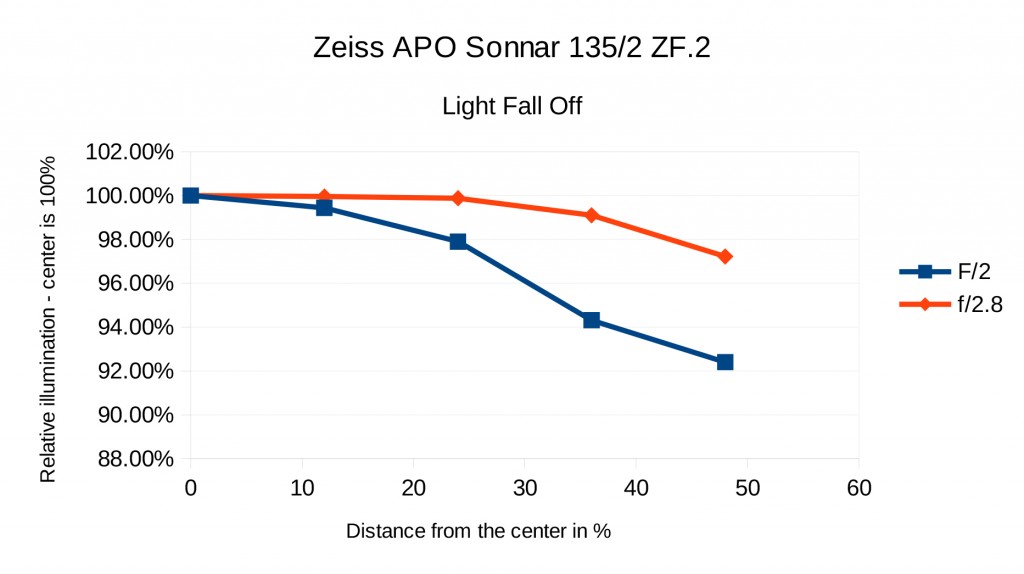
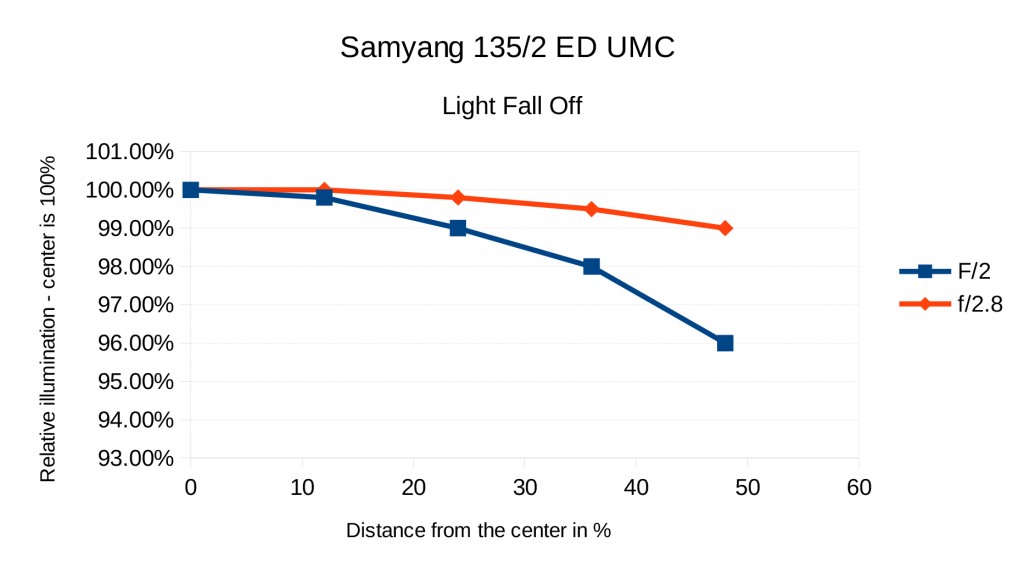
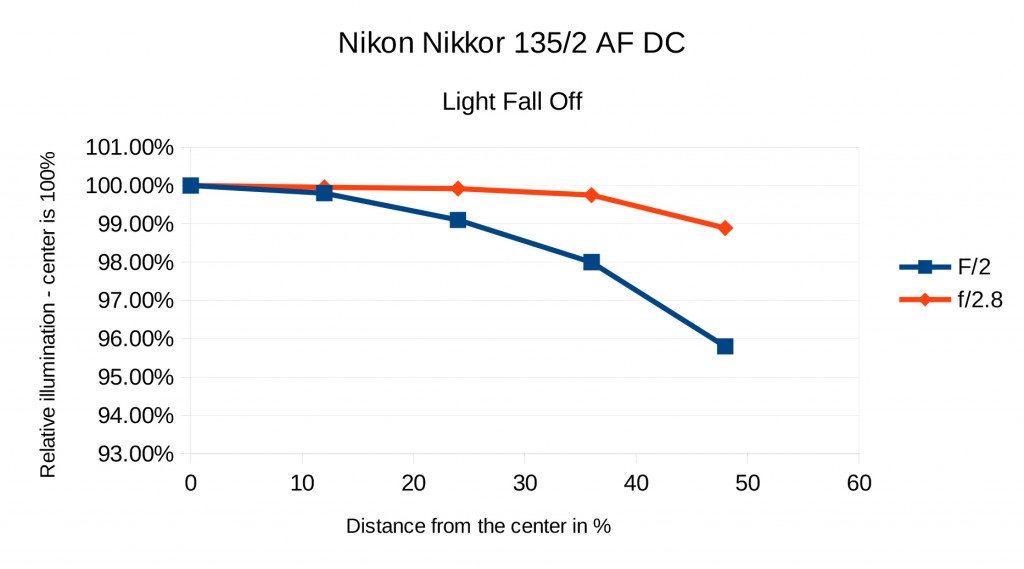
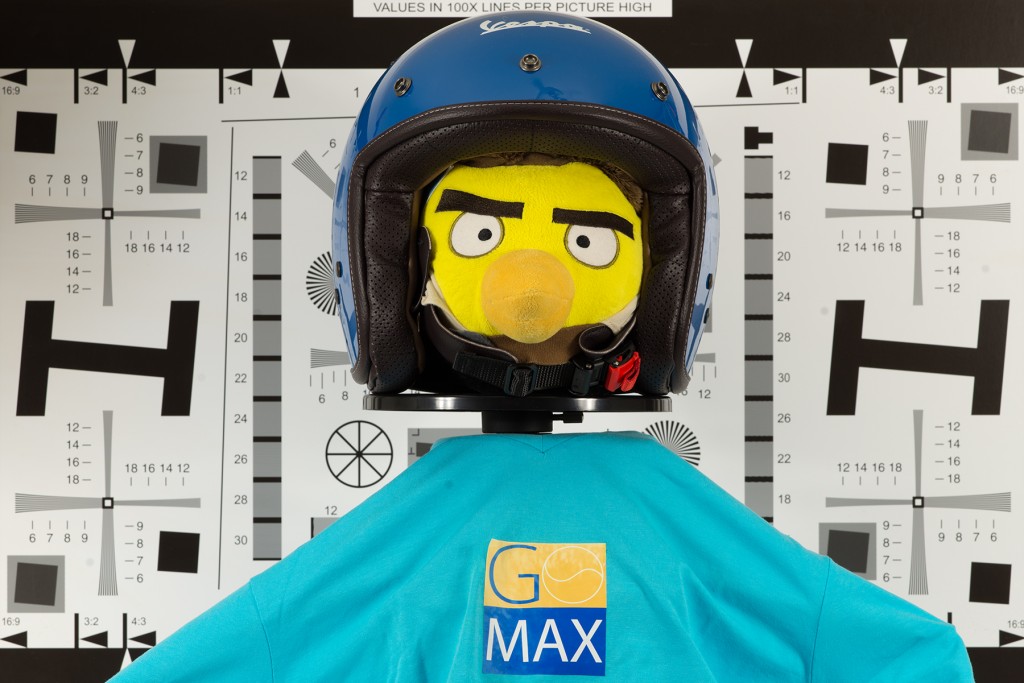
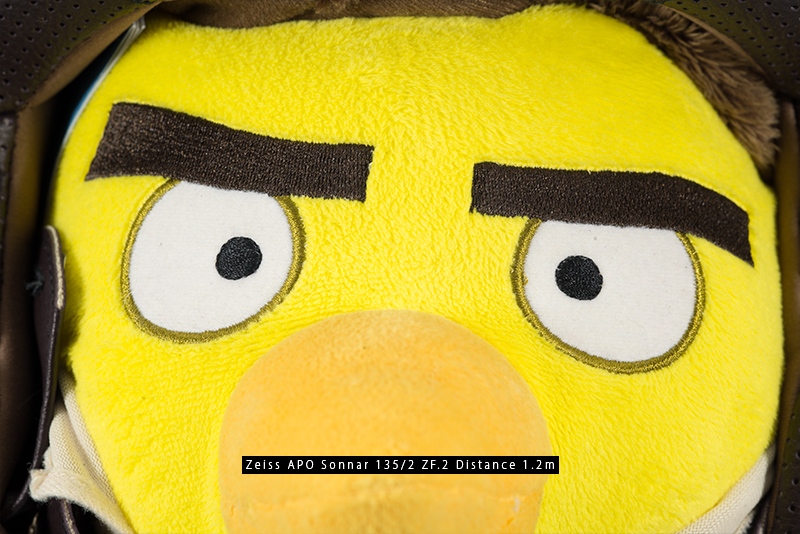
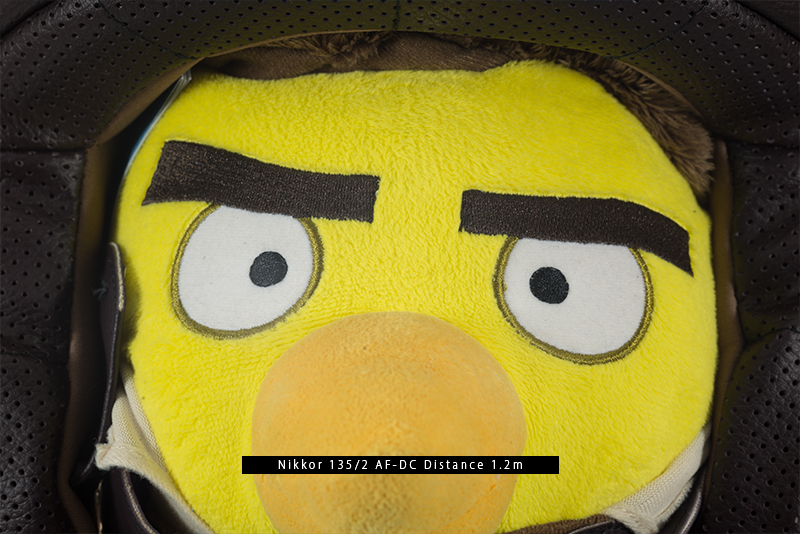
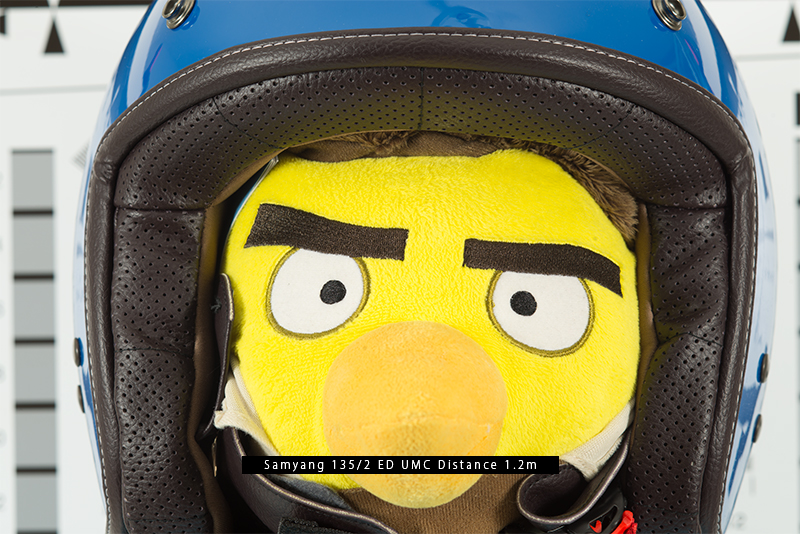
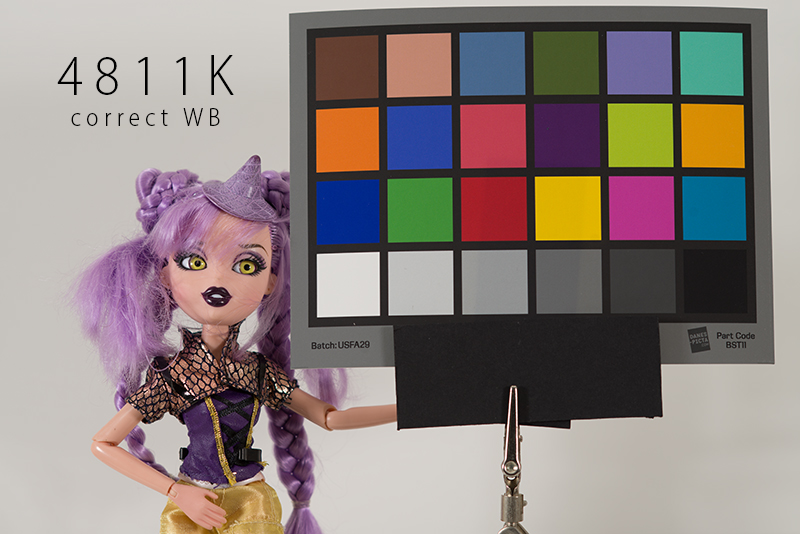
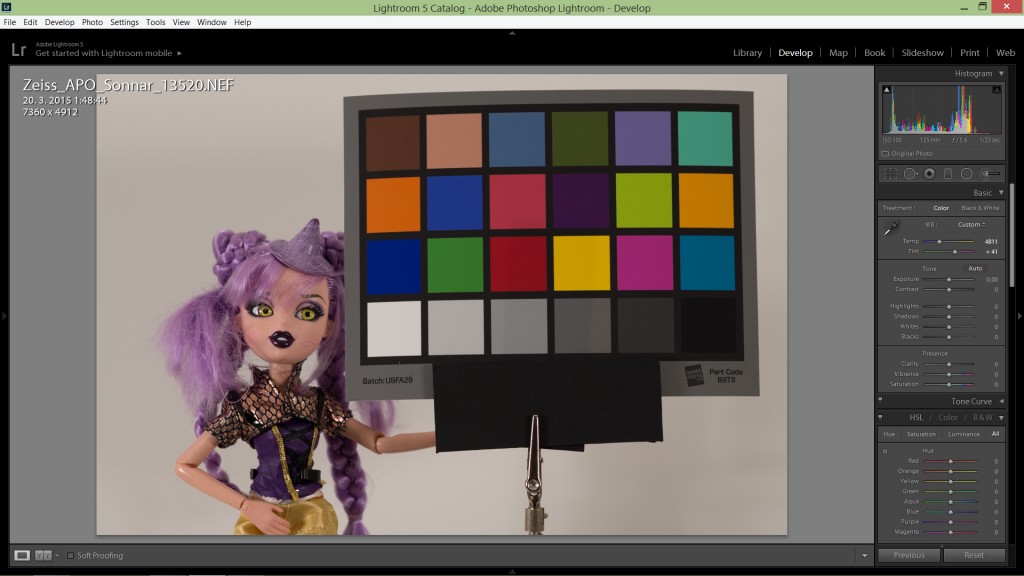
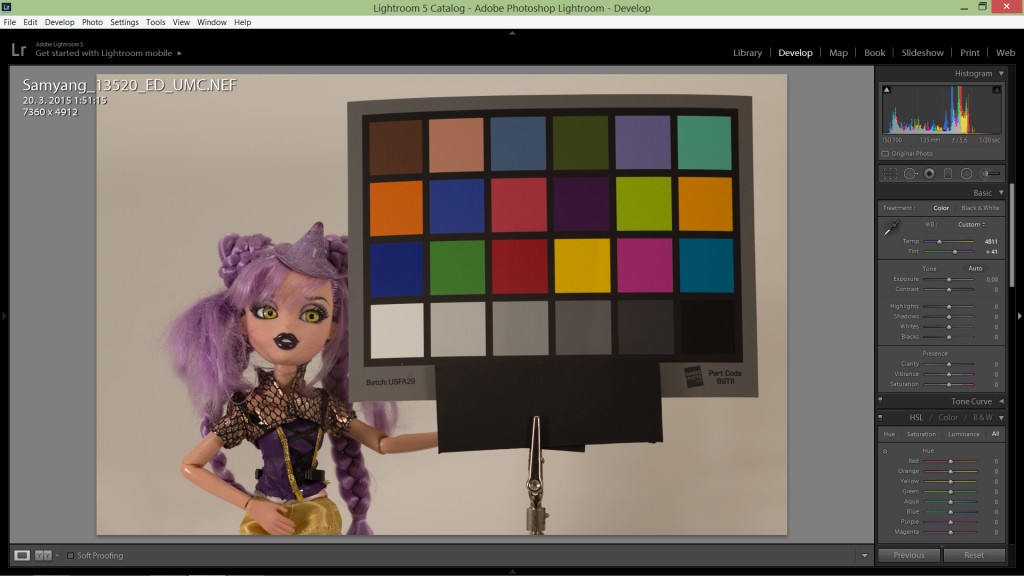
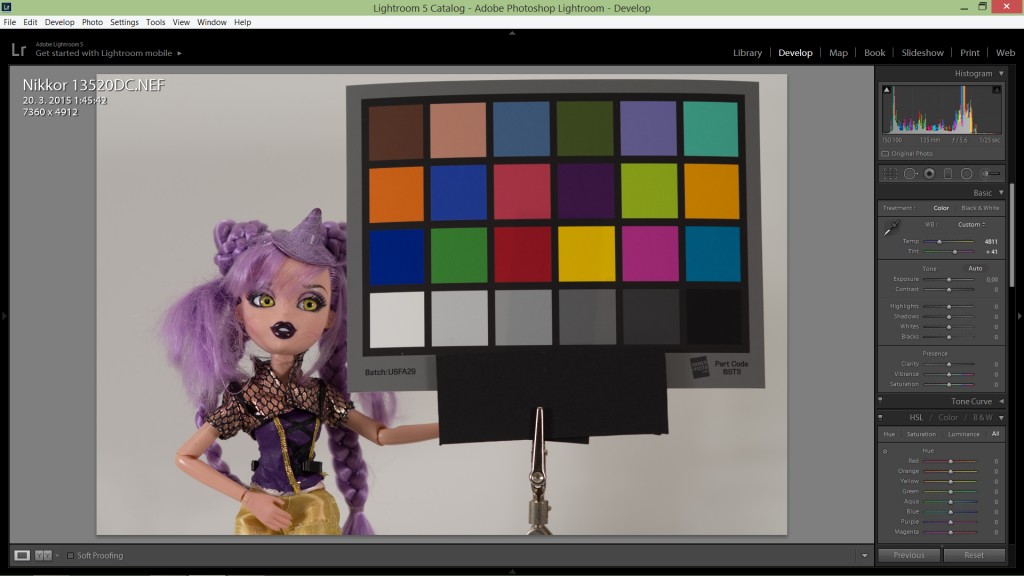
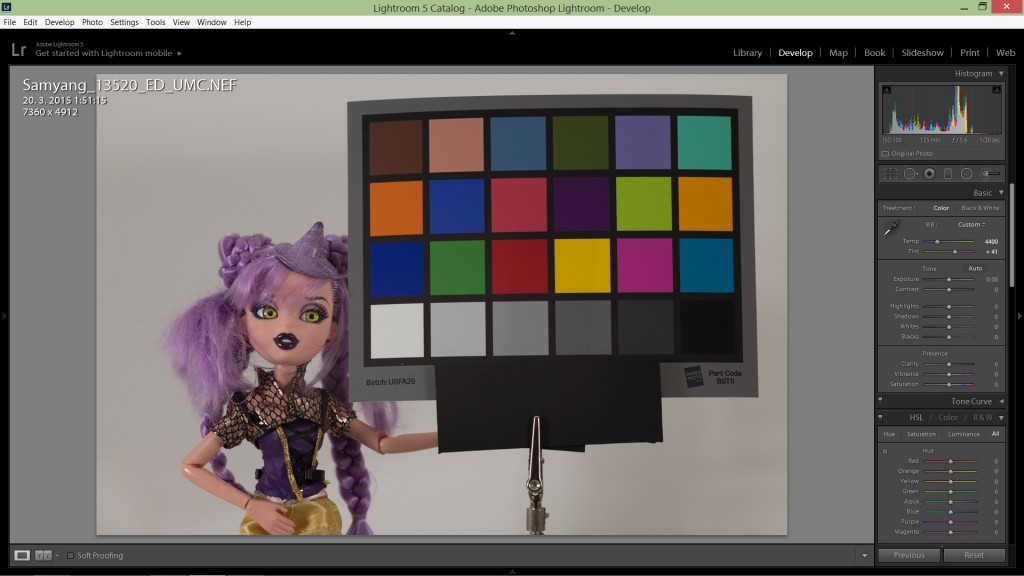
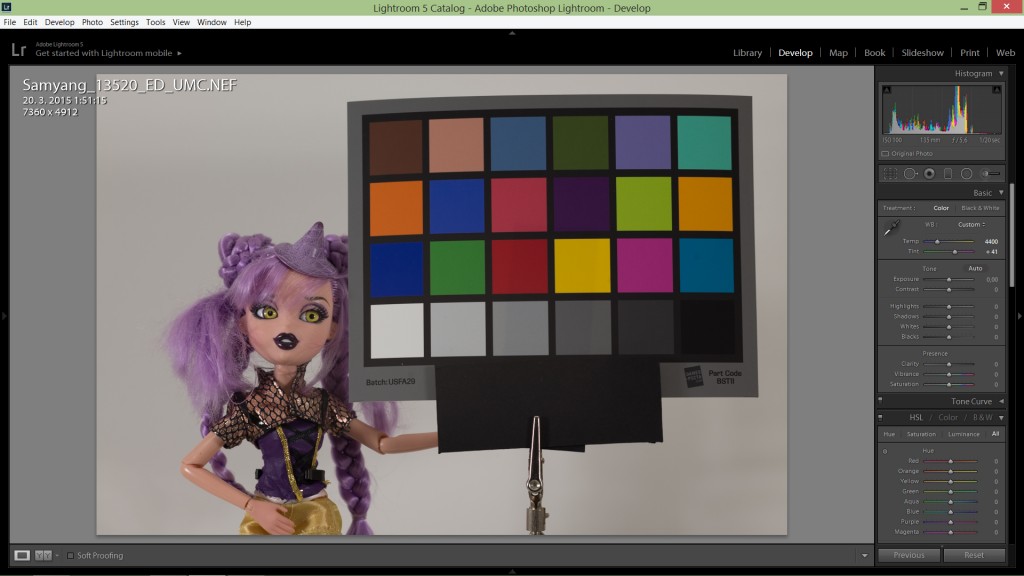
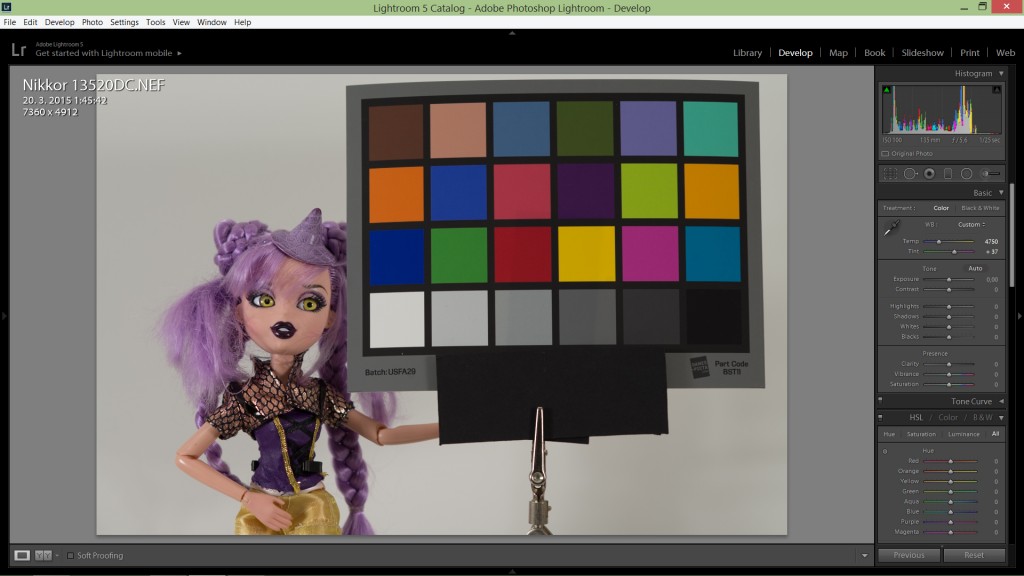
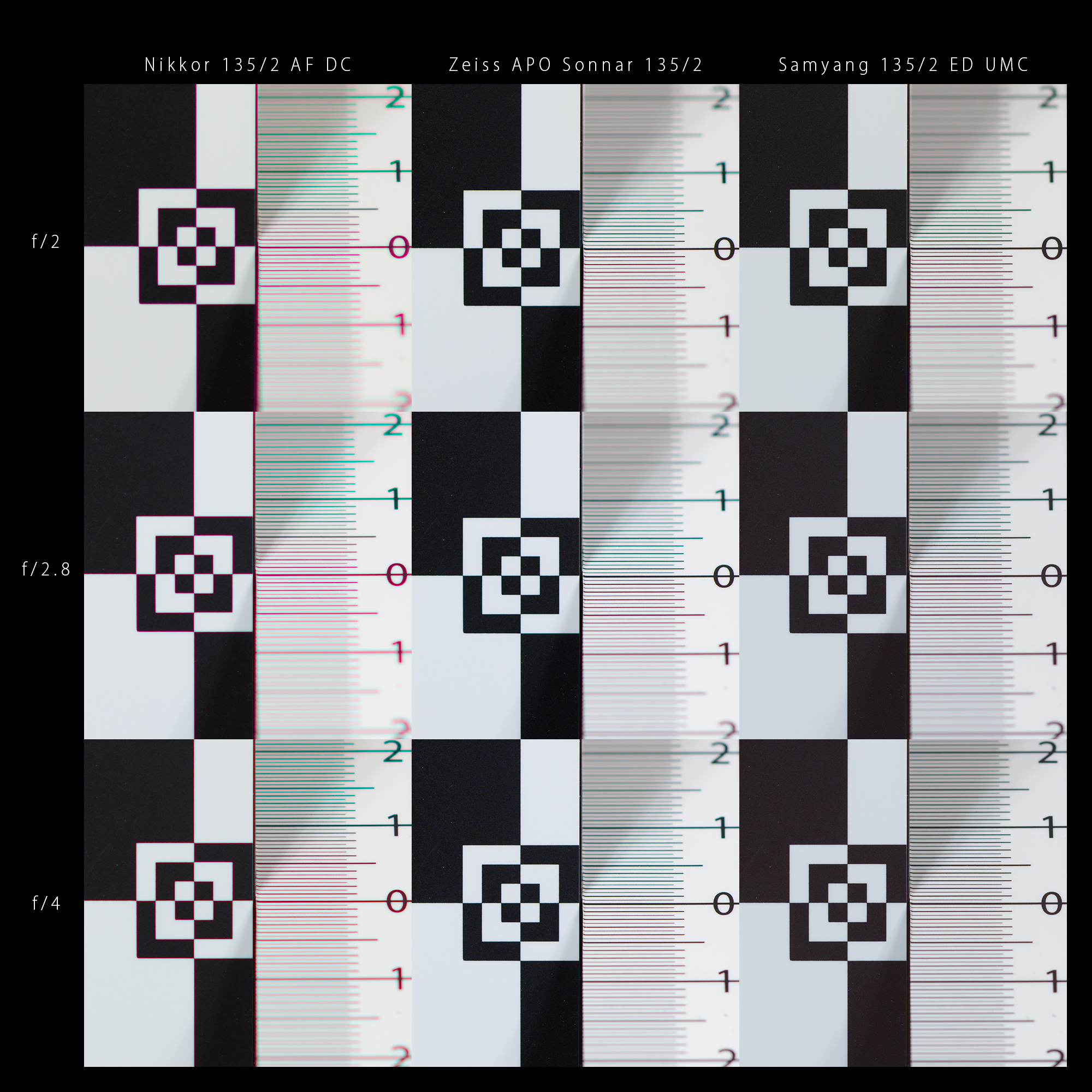
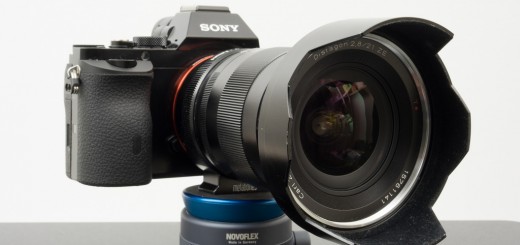
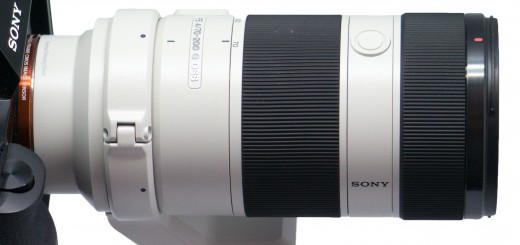
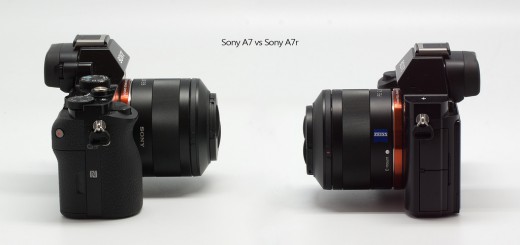













Hi. Was just curious as to which D/SLR would be suitable (not at fault regarding precise focus) at achieving critical focus with the Ziess 135mm f2 manual focus lens wide open, with its shallow depth of field. quickly without viewing aids. Especially do to my weakening eyesight as I age. For I do appreciate fine quality, but only when practical. Dennis
Hi Dennis,
using manual focus lenses with recent DSLR cameras is very tricky… There are some after market split screens such as – http://www.focusingscreen.com/work/d800en.htm
but using it will probably cause lot of troubles related to exposure or super imposed information in viewfinder.
Another option would be to use rear LCD with a hoodman or similar loupe and camera in live view mode (similar as it is used by videographers). In that respect I would suggest recent Nikon flagships such as D810 and D750 because they are using higher quality/resolution screens.
You can of course use mirrorless cameras such as Sony A7 series, if you don’t mind lack of EXIF, iTTL and compressed RAW.
I have solid success in using my regular viewfinder with DH17 magnifier view-piece and rubber eyepiece.
Initial focusing is just a part of the problem though, because DOF is so thin, that slightest movement of you or yours model will result in blur, especially at pixel level. There are nice software tools recently for repair of small motion blur such as shake reduction in photoshop CC or piccure + e.g.
Finally, it’s also about technique that will best suits your shooting style. I tend to use high speed drive mode (3-4 frames per second) whenever possible. When acquiring critical focus (or what I believe it should be) I take deep breath (which moves me slightly backward), fire the shutter and keep blowing the air out (which moves me slightly forward). At SS from 1/200s and faster I usually manage to have 1-2 sharp images in the series.
Cheers,
Viktor
One of the best reviews i ever read, much better than any done with in lab measurements. The Zeiss is not for me, i came here searching for reviews of the Samyang 135/2, which i now own (my 5th Samyang).
Keep the excellent work going!
Tomas
http://www.pbase.com/tomasg_71
Thank you very much Tom, I think you made great choice with Samyang.
Cheers,
Viktor
Very good review. I always was reluctant to get a Nikkor 135/2 dc due to color shift or lack of sharpness wide open. In a recent thread at Dpreview a very well respected photographer showed excellent images with sharpness and contrast better than the 70-200/2.8 vrii, a lens which is well respected. I pointed her to your blog and asked about her test, which didn’t show this softness and color shift. She explained that the Nikon lenses have oftentimes a problem with the DC ring. It is not perfectly calibrated (Nikon confirmed) and needs to be offset. Having found the “true” dc-ring position the results are excellent even wide open. Nevertheless, doesn’t change the fact that the Zeiss 135/2 is one of the best lenses out there.
Hi HF,
thank you for your comment.
I tested DC ring calibration prior to this test (right after the purchase) and what was presented here, was best wide open result, that I was able to achieve with the lens 🙁
I also tried two copies prior to purchase and this one was better of the two (sharpest in the center).
This doesn’t mean of course, that someone else can’t have better luck with its sample.
Other reason might have something to do with specific lighting conditions and distance to the subject.
I haven’t tried 70-200 f/2.8 VR II, we don’t have this lens, nor we have any contact with Nikon to get a testing sample, so I can’t comment on that, but I assume that comparison was made at f/2.8 and most of our results here were captured at f/2.
Zeiss is a fantastic lens for sure, but all of the lenses tested here are exceeding my photographic needs and skills anyway.
Cheers,
Viktor
Great review of Zeiss 135mm APO lenses and comparison (both lab and field) for the other 2 Nikon mount 135mm lenses. I got a 105mm F2 DC which is not as razor sharp as Zeiss 135mm APO (nor makro planar 100mm), but with a nice rendering skin tone. Thus my wife prefers the Nikon 105 much more than the Zeiss, because most of the time, girls don’t want to reveal the tiny defects on their face. Anyway, all great lenses but with definitely different emphasis.
BTW, the external purchase link seems to be messed up between Amazon and Adorama.
Hi Victor,
I like those Nikon DC lenses too. 105 DC is very nice lens indeed.
Thanks for the link warning, I will ask our IT guy to check it out.
Cheers,
Viktor
I have both the 135mm Zeiss and the 135mm DC Nikkor.
The are both fantastic wide open on my D600 or D810.
The DC Nikkor gives you Bokeh softness control to your
personal taste. Great review.
Hi Paul and thank you for your comment. I agree, they are both lenses with unique “signature”.
Cheers,
Viktor
Great review and good comparison. It almost feels like the Zeiss is good yet the vfm makes the Samyang a brilliant lens.
I had the Canon version of this lens and loved every single picture out of this lens. the color and pop are nothing short of amazing.
Is Samyan similar in that feel? From the pictures on close ups it does look like Samyang is sharper but as an overall picture there is something about the zeiss.
Is it just me ?
Hi Mark,
Samyang has somewhat warmer rendering (toward red) and build quality is nowhere near Zeiss. But that’s about it, and in a real life, I doubt that many will notice any resulting differences, when lenses are compared next to each other.
Zeiss is however tremendous lens in every aspect and beside giving the photographer outstanding optical corrections it is joy to use, especially when it comes to the manual focus speed and precision. (Tactile and responsive feeling is very important for MF)
Cheers,
Viktor
I agree with everyone here saying what a great review this was. It was exactly what I needed. I purchased the 135 DC about 6 months ago, and as much as i’ve been loving the bokeh, it bothers me that i have to shoot it at 2.5 (neutral) to get anything even close to usable in my standard, even then its not as sharp as i would like it.
So my next thought was… What could I replace it with, and the only two options i found were these two. My question to you is if you’ve found the overall contrast to be lower with the samyang? As well as the colors being too warm? I have a Rokinon/samyang 24 tilt, and the overall contrast seems low and flat… with the colors been quite warm. that being said I’m also aware that the 24 tilt isn’t exactly known for being sharpest lens.
I do use a color checker, so the colors can be calibrated, but its obviously not the best starting point if you know what i’m saying.
Hi jp,
thank you for the comment.
Regarding contrast, I can’t say it’s lower than Zeisss. In my eyes it’s on par (micro contrast I mean) and even in direct back light situations it holds well (that’s the area where Zeiss is traditionally very strong)
Color shift toward warm tones is obvious though and I wrote about it. I won’t find this as a deal braker, if you are not planning to:
a) use several primes per project (wedding eg.)
b) shot video often.
In both cases, you might find color shift correction in pp annoying and time consuming.
Hope it helps,
Viktor
Wow, i didn’t even notice your review was multi pages of indepth review! I didn’t see the color page. Now it leaves me questioning about the angle of view thing. Would you say that it really is just that close focus quote? I already have an 85 and i need the 135 to be a good step from eachother, otherwise i have a bit of redundancy in my bag. In part I’d like to be able to shoot Wide open for the best bokeh, but also to be able to let as much light as possible in dim churches (weddings). It makes me wonder if the vignetting on the ziess wide open cancels out the bright nikkor stopped down to f/2.5 (for usable sharpness)
Hi jp,
I would say that having 85 and 135 is a bit redundant in most situations, but to which FL is more useful, only you can find the answer. If you have any (even cheap manual zoom form 80′) something like 80-200 and similar, you can take it out for a week or so at 85 and later at 135 FL and simply get idea of what was more pleasing experience (you can use duct taoe to fix FL).
Thing is, that there will be always something longer with larger compression and smoother bokeh (resulting from shallower DOF).
My prefered FL are 14,21,28,85,200 mm, but lot of people will go with something like 16,24,35,50,85,135,200
I don’t feel a gap between 85 and 200 but YMMV. However, not so long ago, I prefered 135 over 85, so preferences are not only individual, but they are evolving in time.
If I have enough distance from the subject and I am after smooth background, it is hard to beat Canon 200/2 L IS (Nikon has similar lens), but I am loosing any kind of intimacy with the model. Image become “distant”, aesthetically impressive but emotionally a bit empty. Getting closer to the subject reveals more of the model personality and brings it closer to the environment. Simply said – 135 and longer are for studio like set-ups (even on location), while 100 and bellow are better (IMHO) for environmental portraits.
To get close to (almost equal) sharpness of the Zeiss/Samyang in the mid frame, you’ll need to stop nikkor to at least f/4. But using Nikkors Defocus Control, you can actually make your subject more isolated (from the background) in some situations, even if sharpness in general is lower.
It is always hard to give a good advice on a subject of lens choices, because we are all suffering fron GAS (or let’s say LAS in this case) and excitement of getting new “toy” often surpass any rationals behind.
I am testing and preparing review of new Milvus 50/85 vs comparable Planars and Otuses.
I don’t need any new lens for my job, but after seeing those lenses compared I ordered Otus 85/1.4. Why? Because it has best correction of CA that I ever saw on lenses bellow 200mm and because I knew that I will never be satisfied till I don’t get “best” 85. (Best optical correction I mean).
In a result I probably saved some money, jumping over Milvus (which is BTW excellent lens too), but I spent a fortune for the lens that in a real life, won’t change quality of my images. (At least not to the level that my clients could recognize)
If you really need 135, go with Zeiss. It is the best you can buy recently in that FL and if you don’t need it or you are not sure about FL, try cheap zoom as I suggested or try Samyang because you will loose less in case of re-selling.
Just my 2c.
Cheers,
Viktor
Yeah, I deffinently feel like 85mm is more practical in many situations, but I prefer 135 for a tight headshot/head+shoulders. I just think that the 85 isn’t compressed enough for those type of images. Thats why carry both, 135 if i can… 85 if I cant. 70% of the time my camera has the 85 mounted on it, but i roll with a 20-50-85-135 right now (outside of specialty tilt and macro’s), some day i’ll pick up a 35 but I’m really not a fan of anything in the 24-70 range… its like theres a lack of pizaz, but also not too flattering either…
money is actually tight, even though I do have the DC, it would be quite a hurdle to sell the dc for $800-$900 and turn around and buy a $1800 Zeiss. Thats obviously why the Samyang is so attractive, but its like “is it worth it?” I’d be getting funky colors, and greater vignetting, and possibly loose a fair amount of FL, and obviously AF to switch to the Samyang. IDK i sit at a crossroad and your artical is top notch!
Thanks jp and good luck with your choice. On a positive side, you can hardly make critical mistake those day. Oh and if you want maximum isolation at 135, how’s about – http://www.zyoptics.net/product/pre-order-mitakon-speedmaster-135mm-f1-4/ 🙂
Cheers,
Viktor
Holly HOLGA Batman, that is a fast 135!
Yeah… It’s very compact and light too…
I would love to test it though, but with only 100 pcs. planned for production, (or maybe that’s just marketing trick?) I would hardly be able to put my dirty hands on it. Dpreview tested preproduction sample and if I remember correctly, they were kind of positive.
Cheers,
Viktor
Thanks for the review. Looks like I am putting my money in the Samyang, same sharpness and better bokeh/separation for a quarter of the price.
In the color rendering test, the Zeiss image is actually from the Samyang.
Color rendering is the most important difference between the two lenses as far as IQ is concerned, so that should be corrected.
^^^ I mean the one with WB corrected.